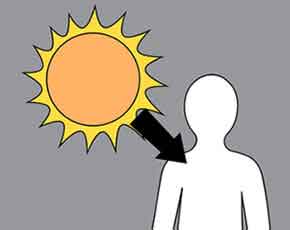- Home
- Editorial
- News
- Practice Guidelines
- Anesthesiology Guidelines
- Cancer Guidelines
- Cardiac Sciences Guidelines
- Critical Care Guidelines
- Dentistry Guidelines
- Dermatology Guidelines
- Diabetes and Endo Guidelines
- Diagnostics Guidelines
- ENT Guidelines
- Featured Practice Guidelines
- Gastroenterology Guidelines
- Geriatrics Guidelines
- Medicine Guidelines
- Nephrology Guidelines
- Neurosciences Guidelines
- Obs and Gynae Guidelines
- Ophthalmology Guidelines
- Orthopaedics Guidelines
- Paediatrics Guidelines
- Psychiatry Guidelines
- Pulmonology Guidelines
- Radiology Guidelines
- Surgery Guidelines
- Urology Guidelines
LED lights safer, more effective in producing Vitamin D3 than sunlight

Research published today in Scientific Reports shows that light from RayVio's 293nm ultraviolet (UV) LED is more efficient than sunlight at producing vitamin D3 in skin samples. Tyler Kalajian and his research team, led by Dr. Michael F. Holick, Ph.D., M.D., and supported by Boston University School of Medicine and a Boston University Ignition Award, found that skin samples exposed to RayVio's UV LED for just 0.52 minutes produced more than twice as much vitamin D3 as samples exposed to 32.5 minutes of sunlight.
"We tested ultraviolet LEDs from different sources and at different wavelengths. RayVio's 293nm LED showed the most significant potential for vitamin D3 production in the shortest amount of time," said Dr. Holick, a Professor of Medicine, Physiology and Biophysics at Boston University School of Medicine, and endocrinologist at Boston Medical Center. "This study will lead to a new generation of technology that can be labeled as photopharmacology in which the use of LEDs with targeted wavelengths can cause specific biologic effects in human skin to help treat and prevent chronic illnesses."
Vitamin D deficiency is associated with osteoporosis, rickets and other metabolic bone diseases and is more prevalent in northern and southern latitudes where sunlight is limited for a significant part of the year. This device for making vitamin D is ideally suited for patients with fat malabsorption syndromes including inflammatory bowel disease and gastric bypass surgery.
The research shows that RayVio's UV LEDs could be used for treating patients that are vitamin D deficient. A vitamin D3 producing UV LED device could be used on skin areas that experience less exposure to sunlight such as upper legs and arms and abdomen and back thus minimizing risk for developing non-melanoma skin cancer. The UV LED device also emits a much narrower band of UVB light and thereby decreasing likelihood of skin damage that can occur when the skin is exposed to higher wavelengths of UV radiation.
"The potential of digital UV technology for phototherapy is enormous," said Dr. Robert C. Walker, RayVio's CEO. "Dr. Holick's research with our UVB LEDs demonstrates the potential for new applications that can potentially improve and save hundreds of thousands of lives.
About Vitamin D3 Two forms of vitamin D are important to humans: vitamin D2 produced by plants, yeast and mushrooms, and vitamin D3 produced by skin when exposed to sunlight or the appropriate wavelength of ultraviolet light.
U.S. alone, seventy-five percent of teens and adults are vitamin D deficient. Thanks to the work of the research team and the pioneering work of the Boston University Photonics Center on UV LEDs, we may soon see innovative treatment options like simple integration with a wearable device could aid millions of people."
Co-authors on the paper, all from Boston University, are T.A. Kalajian, A. Aldoukhi, A.J. Veronikis, K. Persons, and M.F. Holick.

Disclaimer: This site is primarily intended for healthcare professionals. Any content/information on this website does not replace the advice of medical and/or health professionals and should not be construed as medical/diagnostic advice/endorsement or prescription. Use of this site is subject to our terms of use, privacy policy, advertisement policy. © 2020 Minerva Medical Treatment Pvt Ltd